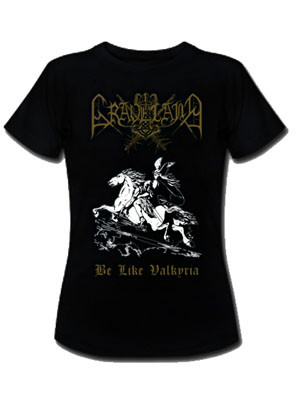Deceased are an incredibly longstanding band from Virginia, US. They’ve run full-circle in their career, from over-the-top metal and hardcore of the mid 1980s (Discharge, Voivod, Slayer, Sodom) later merged with the energy of emerging death metal in the late eighties/early nineties and back again to rediscover themselves in the context of their heavy metal forebears. King Fowley, whose enthusiasm for the music he plays and what it represents seethes through everything he does, has lead the band’s charge since their inception.
Originally for Heidenlarm e-zine #5.
Cursed productions recently issued The Radiation Years, a collection of early demos. Is this the complete deceased pre-label discography?

Actually it’s not! ‘The evil side of religion’ our first demo still needs to surface complete. And will very soon! Probably on Cursed Productions as well. Actually in all honesty there was a home studio demo before ‘luck of the corpse’ l.p was recorded. With ‘Fading Survival’, ‘Terrifying Spectres’, ‘Industrial Tumor’, and ‘Psychedelic Warriors’ that is ‘lost’ to me and the band. The master was lost in my pile of cassette tape hell, that is my collection. I only know one guy who may have it and it’s a guy named Yoshio Cain who plays for the Japanese band Shadow now! He was a die-hard Deceased freak and i sent it only out to him back in 1989! I hope it is ‘found’ one day! It’s got some wild stuff on it :)
Other then that, only rehearsals and stuff like that is floating in ‘the vaults’ :)
When you started out as a band, it seemed you were one of the first to bring technical and speed metal elements, like Voivod and Razor (?) influences, to the music. was this a planned decision, or a natural culmination in the ways metal was being made at the time?
We were so fucking high on any drug we could get our hands on we were off in ‘freakout’ zone. We were honestly just trying to be the most ‘over the top’ band ever. We were taking speed from Sodom, Slayer, DRI, punk, thrash, etc. And mixing it with distorted styled lyrics of dread and death ala ‘War and Pain’ era Voivod, and Venom, Blessed Death, etc. Then ‘attempting’ to put in some Voivod weirdness guitar chords, and some Mercyful Fate ‘evil’, just all of it on hand! We had no idea where it would take us! It was very straight forward and insane! It was basically just a bunch of long- haired teenagers in Slayer and Venom shirts going nuts for metal and aggresson in 1985!
The first Deceased I ever heard, Luck of the Corpse, had tight and fast rhythmic arrangements and workout drumming; what atmosphere were you intending on that album? How did it turn out relative to your expectations?
Well ‘Luck..’ was an experience! I got good and bad memories of that ‘era’ of Deceased. Original guitarist Doug Souther and me were completely on different levels as to where the band needed to go both musically and personality wise at that junction in the bands life. So it ‘clashed’! Neither of us was right or wrong. Just ‘different’ in our beliefs! I think the other guys (Mark and Les) wanted to go with my ‘angle’ more so, and Doug took offense. He was really ready to move on and away from the band. So recording that record had it’s ‘negativity’ to it. Musically it’s just too fast for it’s own good! Trying to still live up to our ‘faster then you’ attitdues and trying to release something ‘good’ for death metal fanatics the world over to bite into. Everythnig was ‘rushed’ and in the end it sits a bit ‘dissapointing’. I loved the songs and I loved the chance to release a record with Relapse and be thought of as ‘competent’ enough to record and be on a record label. That was great! It was ‘neat’ to see your face and music on a cd and vinyl, cassette. It felt ‘good’! We were ‘growing up’ a bit and we had to start somewhere ‘fresh’ as a band.
 When you think of the people who enjoy your music, is there anything they have in common (besides enjoying Deceased)?
When you think of the people who enjoy your music, is there anything they have in common (besides enjoying Deceased)?
I’m sure there is! I personally like to call Deceased music supporters, ‘friends’! I don’t like the word ‘fans’. Makes you think you are ‘better’ then them! We are all ‘even steven’ in my eyes. We all get up out of bed, eat, drink, sleep, love music, got our hobbies, families, etc. That’s all it is to me. ‘Seperation’ between bands and their music supporters is pretty ‘high ego’ to me. No need! Let’s all just have fun and keep on laughing through as many good times as we can!!! Look out for each other and keep on keeping on!
People sometimes ask me if I feel I’m being disrespectful to the dead by celebrating morbidity through music. What do you think about this question?
Hmmm — good question! Morbidity through music. I don’t personally see any disresect in it. Death is imminent to all and we all have to challenge it daily, every day on earth. No one knows the exact moment they will leave this place and move on to life beyond. Is there life beyond? Is it peace? Is it despair that awaits? No one truly knows. It’s life’s biggest mystery!
As soon as you’re born you’re dying. I talk about it and ‘subject’ it cuz it too intrigues me as a human being. That’s why ‘deceased’ was such th eperfect name for our band. Being the lyricist of the band i know in my heart how i feel and what my words are being meant when i write them. I am a very ‘up’ guy in my living personality. But death is always looming in the back of my brain for sure. It’s just something that truly intrigues me! Death to some is sadness. To others it’s joy, a time of celebration. To me it’s just ‘death’ and it’s unknown what will be ‘next’!
Metal has gone through huge changes since the middle 1990s. With the internet and the personal computer, it now seems everyone has a label or a zine or a band, and there’s tons and tons of metal “information” with perhaps very little data. What do you think the next stage will be?
Well it is always ‘evolving’ with the times and technology. Some for the better some for worse. But that’s ‘life’! I appreciate anyone who sincerely sits down to write an article or passes on msic to a friend to possibly enjoy. It’s ‘word of mouth’ to me that still runs the metal ‘underground’. I dont like label created ‘hype’ and ‘buzz’, never did! Let the music do the talking is my motto. Too many people sadly fall into the ‘live for the press’ mentality. Bad reviews send off interest to some people. While a ‘shining’ review makes them instantly ‘love’ it. Too weird to me!
I got my own mind, and I think and choose for myself what works for me musically as a music supporter! Sure, take all ‘aspects’ into consideration. Cuz a review can ‘help’ in your selection, but in the end let it be no one but you who decides what ‘you’ like! As for ‘next stages’, hmmm?! It’s hard to say! The internet/computer is definitely running the show now. It’s quick, updated at any given time, right there for anyone to take in! I say that will run the gament for some time still!
I was talking with Ray Miller of Adversary, a band from Indiana, and I said that in many ways I respect most the styles from when the styles we have today were newly forming. He suggested I listen to early Deceased, and I did and heard many influences in the music. What do you think each style of metal (heavy metal, melodic heavy metal, speed metal, death metal, and crossovers like hardcore, etc) represented to the generation that produced it, in terms of both music and attitude? When you brought together these styles, could you recognize each distinct impulse in your work, or did they gel into a new language?
Well i’ve always loved music. I mean anything and everythnig that got me ‘going’ i loved! It is my life’s greatest ecstasy. Early on I fell in love with the Beatles,. I was literaly 3-4 year sold. The choruses… the ‘greatness’ was quite easy to understand to me. Then I got into the ‘hoopla’ of Kiss. The blood of Simmons on the covers, the ‘image’ and visuals. It’s perfect for an 8 year old to sink his/her teeth into! It got me into wanting and craving more outlandish and more ‘over the top’ music. Trying to conquer the ‘extreme’! What is now tediously ‘mellow’ in music standards of today (Van Halen, Ted Nugent, Heart, Benatar, etc.) was once ‘over the top’ and pretty darn ‘heavy’ stuff! I just kept poking my head around in mags, record stores, all of it to ‘find’ something to fix my craving. This got me to the ‘gory’ Eddie and Maiden, razor blade through fingers artwork of Priest, the ‘devils and witches’ of Sabbath! All of it! Which in turn got me to Motorhead, Ramones, Plasmatics, Venom, etc.
It’s all a big ‘turn of the screw’! It just continues to move on and no one can slow it down. So when i got into deceased and we formed the band we knew deep down all of us had a common bond for ‘muis’c first and formost. Sure, we were ‘caught up’ in th eheavy metal mania of the times. We died for sodom, exciter, venom, fate, manaowar, all of it! But we still had our ‘elders’ of musical uprise (The Cars, Kiss, Journey, Blondie, Foreigner, etc) in our hearts as well.
We were living the life style of ‘full blown heavy metal’ but we had our hearts set in music!
So when we started writing we just blew it out as fast and furious as we could. Beyond “caught up” in the times of aggression and drug- fed energy. The ‘attitude’ you speak of was just 100% ‘us’! It was ‘Deceased’! We just got in and ‘did it’! We took all of the aspects of music we loved, speed of hardcore and thrash, melody of traditional heavy metal, choruses and ‘structures’ of traditional kiss styled rock n roll, and the ‘zaniness’ and off kilter of punk and the ilk.
It ‘worked’ for us! Sure some ‘genres’ worked better for us. But it was still all just a big band blender and we kept feeding it with more musical vegetables :)
It seems to me much of the metal from 1978 onward would have lost impetus and extremity if it weren’t for the influence of hardcore music. How do you think on this issue?
Yeah, I can see that indeed! ‘Extreme’ standards have gone ‘haywire’ n the last 20 odd years. It is the ‘way of the world’ on all accounts. Everything is faster paced in the world. More ‘raw’ and much less ‘polished’. No one has time to ‘stop’ anymore. Alot less ‘love’ in the world, sadly so much hate and destruction. A total ‘kill or be killed’ mentality!
No one has time to ‘relax’. It’s just ‘go go go’! So obviously the people creating the music are gonna ‘release’ it in the same way. It’s all humans jsut ‘being human’! That’s just how it is!
Do you read any zines or websites today?
All the time! I’m always taking in the words and wisdom of others. Knowledge is man’s greatest gift, and at times our worse enemy.
But it to me is food for thought and impossible to not ingest.
As I said anyone who sincerely takes time to put up a musical related site or a fanzine, magazine and you read it and instantly fall in love with their ‘personality’ or the ‘charm’ of the crafted entity, that’s just a great feeling! More power to ya’! I know i’ll be reading and searching it all out.
Do you think the political climate in the USA will be more or less tolerant of death metal in five years?
I say it’ll be the same as of today. It seems to ‘stay’ under the radar al lthe time. It seems no one’s minding the ‘smaller’ people of the earth and globe right now, music or non music related. But i see a slow but steady ‘rising’ of this around the world and in time it will outnumber or truly challenge the ‘theories’ and practices and beliefs of alot of the world. Geesh remember when Dee Snider was ‘sooooooooooooo bad’ in the governments eyes?! Wow! How far we’ve come in 20 years!
Around Fearless Undead Machines, it seemed to me that your style as a band shifted from aspiring to a death metallish sound to more of what you were doing with Doomstone’s first album, namely making heavy metal using some of the techniques from death metal. Rhis to me was a brilliant move, as it put you closer in touch with your roots, aspirations and musical loves. How is it that you as a band can pull something like that off, and Immortal could, but virtually every other musician appears mediocre when they attempt something like that?
Well, that’s some nice words coming from you, and we truly appreciate it! All I can say about that ‘time’ is that we as a band had decided we needed to complelty build on our ‘musical strengths’! To sincerely cut the ‘fat’ and ‘extras’ of our sound up to then (‘Blueprints..’ l.p was very bizzare and ‘all over the place’ musically) and do what 100% worked for us! We were still ‘searching’ for our ‘perfect identity’ in music and we at that time, I beleive, found it! Guitarist Mike Smith came forth and said ‘i write guitar riffs this way and this is what i want to write in this band’. I took it into consideration as the band’s ‘arranger’ of songs. Mark and Les (guitar and bass) also put their ideas and words into persepctive and it really felt ‘right’. It was a sincere ‘bonding’ of the band both musically and spiritualy! We ‘got on wth it’ and delivered our finest record up to that point in our eyes. It was very well recieved by the industry and that felt good to us. Doing it completely ‘our way’ and being accepted for it! From there it’s all just ‘fell into place’ since.
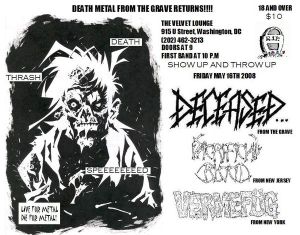
I’m told that King Fowley is still a very active tape trader. How do you find the time? And what do you trade?
Well tapes are now cd’rs in our ‘technologically advanced’ world! Haha
I love to ‘pass on’ the music to others who care to listen!. I trade with anyone that wants to spend the time to burn and learn as much as I do. I got so much music I can not afford to buy at this time sadly. And I got tons of music I have collected through my many, many years in the music field in return.
There’s no greater feeling then passing over a Demon Flight cd burn to a friend and watching them get the same smile I got when i first heard it! Or the ‘cheer’ from the guy who says ‘man that fucking Griffin you sent me is bad ass’! It just feels ‘right’ and makes me smile every damn time. I find the time cuz there’ s always time for things you love to do. That’s one of my personal ‘life’ ways of the world!
Were there any other Deceased side-projects besides Doomstone?
Well, Deceased-related, no not really! Unless you count a few ‘one off’ sessions with silly named ‘projects’ me and Mark have done like ‘Masbah’, our tribute to Japan’s Casbah and early Master from Chicago. It was a jam session and we just went ‘silly’ haha. I got that on tape somewhere, and i believe that was 1991. Also there’s ‘talk ‘of me and Mark doing ‘rock brigade’ an all 80’s rock thing where we cover Aldo Nova, Gary Moore, Fist, and Triumph songs, etc.! Les Snyder was/is in Doomstone along with me and that was fun. Doomstone has gone all over the place using ‘session ‘guys and just ‘mixing it up’ to confuse us as well as others. Now I do have a side band called October 31. It’s not Deceased-related outside of me being part of it, but i really enjoy the times and music that band has created! ‘Traditional’ heavy metal is what we file that under!
Does metal exist in the mainstream any longer?
It doesn’t matter to me. The music is the same to my ears! The identity of the ‘captivating’ audience has long gone back to the ‘die hards’. And that’s how I personally see it fit. It’s not for everyone and it’s really by it’s own ‘musical law’ not to be concieved as very ‘commercially viable’. It has it’s ‘surges’ and it’s a rollercoaster love affair to some. But to me it’s just music and it’s always gonna be there for those who want it! I know i always will!!!!!!
What do you make of this hip-hop influence in nu-metal – artistic advancement, or tool of the labels to make music more like that which they have trained the sheep to buy?
Wow man! I really am the wrong guy to ‘invite’ this into metal music. That ‘style’ of art never did a damn thing for me. Outside or inside the genre of metal music. Just does’t ‘click’ for me in the least! Some took to it instantly, others it ‘grew on’. To me it just does not work!!! It tries to break down the ‘barriers’ that as I mentioned metal music kinda set its self in firmly many, many years ago! The ‘funkiness’ of it isn’t needed for metal. The ‘ghetto’ vibe is just so ‘out of place’ in the metal genre. Let it be its own ‘entity’ and stop trying to ‘heap’ it in with the trappings and undying spirit of heavy metal music and it wont be a problem with me!
Old metal records seemed to me to be a brilliant project, because each generation of metalheads ages and then the music they found meaningful, especially the rarities, is forgotten and all we know of that time are the bands with excellent advertising budgets. Is there a way to combat this generational loss in metal?
Well, I tried! Sadly human nature came into play again. And what was once a great dream and ambition of mine became tarnished with false promises and greedy people pretty quick. I tried in vain to keep the label going forward from day one. But too many ‘ex band members’ forgot what it was to play and record music and let it be heard by any and all they could. They wanted all of ‘this’ and all of ‘that’. Like I was to reimburse them for being shit on by their record labels of years ago. I’m just a dude into heavy metal music and I was doing all I could to ‘better’ the cult past by re-reelasing and upgrading formats of their music from a time ago. I’d get old band members of bands I loved names out of phone books and call them up and talk about putting their stuff out again. Some instantly ‘clicked’ with me and my ideas and some past and we went our own ways without a problem. But it was the empty promises and sudden changes of thought half wa through projects that got me ‘down’ on it all. I’d press a bands c.d and then they’d ‘change’ their mind. Or something or someone would surface with a not as enthusiastic feeling for the event!
You know if I was to please every person in every band I was in touch with I’d never have released jack shit! Every band has ‘differences’ and years later some could ‘give a shit’ and some don’t wanna know at all. It got old and I just tried to put it to rest. The label’s still around in small spurts but it’s never to be the same. Some bands appreciated my sincerity, and we still remain great friends, while others now knock me in their ‘revival’ interviews from nostalgic metal, retro- mags etc.
It hurts to see that sometimes, but I know what I did and how I approached it. And i can 100% always live with myself for that!
Is it true that most metalheads quit at 30?
Probably! Some call it ‘the music of youngsters’! And 30 seems to stop the youngster ball rolling for some. Not me! Gonna be 35 in a few months. And I find it healthy, life giving, and still 100% a part of every day I exist on! To me, it’s all in the way you look at things.
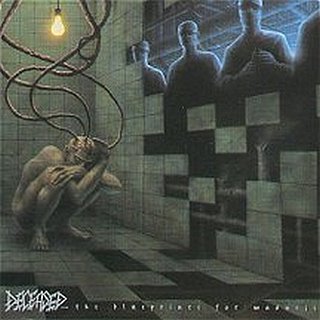
Do you think paranoia in this time of history is warranted on the part of the citizen?
Yes! Too many croonies and back stabbers, fakes, cheats, liars, out there. Who sleeps with their windows open anymore at night!? Sad isn’t it! Laziness, greed, the need to ‘stay up’ with another persons fortunes plays evil tricks on the mind of many. The ‘whoever dies with th emost toys wins’ mentality is fucking pathetic! I say take what you got and build on it. Some obviously have it easier in their means/ways to ‘survive’. Some deserve it, some don’t!
But the cards are drawn, make your own dreams! Paranoia is indeed ‘needed’ at this point in life. From this horribly, crummy war, to the indecencies and anger that most of the free world puts on each other daily. It’s fucking sad! Human beings, a dying breed! One day…extinction!
While your early material was urgent, it seems your newer work is more medium paced. What caused this change, in your view?
Urgent was the drugs and the ‘need’ to stay up with the speed factor. Our mentality was speed is ‘extreme’ and we were wanting to be part of the ‘extreme’! We don’t feel that ‘urgency’ in that way anymore! We love fast! Trust me im’ a hyper spazz ‘fast’ guy! Haha
But it’s now ‘called for’ when needed! I do say ‘its alive’ off our lastest e.p is still pretty frantic and indeed ‘fast’!
It’s all in the song and emotion of the day!
How did creating the Doomstone album For Those Whom Satan Hath Joined influence your outlook on songwriting in deceased?
In no real way really! It was just a project that took off in a real bigggg way for awhile. People really liked the ‘Sabbath edge’! The darker substance. The slower ‘brooding’ of the pace of the songs for the most part!
It’s got a great place in metal music. Cuz so many who listen to this genre have that ‘twisted’ underframe.
But as far as Deceased goes, it didn’t really influence me or the band in the least!
Do you listen to any black metal besides Venom?
Well what’s ‘black metal’ anymore? The gurggling, non heavy, non catchy crud of something like Darkthrone? I despise that horrible shit! To me it has to ‘brood’ it has to ‘lurk’ it has to create the ‘dark’ side of things in both atmosphere and personality. That fast insane blast, garage punk/electric shaver styled guitar, and unimpressive or convincing vocals stuff don’t so it for me! I just prefer the ‘trappings’ of a Venom ‘Sacrifice’ or a Mercyful Fate’s ‘Into the Coven’ anyday! I listen to tons of the newer stuff out there and often ‘hyped’ up. And I hope to hear something i can grab onto. But sadly it get sput to the side and discarded over time. Cuz it don’t have depth or stayin gpower for my tastes in music. I think the last great ‘black metal’ record I heard and sincerely appreciated was ‘Ritual’ by Master’s Hammer! And that’s at least 10 years old now! I’m still waiting and hoping for more ‘darkness’ to surface.
What were the handful of most influential bands during the 1980s? 1990s?
Do you mean for me??? Voivod, Venom, Fate, Slayer, Maiden, Queensryche, Motorhead, were big ones for my Deceased musical ‘ideas’ in the 80’s!
The 90’s brought me fewer bands cuz my seeds were set!
I wasn’t as ‘keen’ on ‘influential’ bands like Fear Factory or Deicide or that type!
I am set in the 80s for sure! Though I love tons of music made in the 90’s as well! Just not as ‘influenced’ by it as a player! One band I truly admire from the “90’s” is The Gathering. Beautiful people and gifted as hell musicians and song-writers!
Did these bands differ markedly from the bands of the 1970s?
For me it sure did! Cuz the 70s belonged to the radio for me as a kid! By the time I was into less known ‘album tracks’ by radio artists of my ‘childhood’ it was almost 1980! I was the ‘hit song’ guy! But I quickly learned there’s tons of songs the radio doesn’t play that really got my goose :)
What do you think bands in the 2010 decade will be like? Will there be a resolution to mainstream versus underground, black versus death, funk beats versus metal beats, etc?
Who really knows? I just keep watching this ‘segregation’ unfold from the sidelines and some of it is justified while some is just plain silliness. I really don’t care where it goes really. As i said earlier music is… Music!!! You like something, like it to death! Who’s up who’s down, who’s got the upper hand!
My advice is to just play from the heart with all that you’ve got inside cuz that’s all you have at the end of the day!
Referencing the previous question, it seems to me that metal uses percussion differently than most mainstream music: where mainstream music creates a bounce and an expectation of its fulfillment, metal creates a driving structure which encloses change in harmonic/melodic patterns (by other instruments). What ideas differ between these two groups?
Metal music is known as a driving force so you will find it staying on tap and ‘in the pocket’ most of the time! Metal has a great love for dynamics in the traditional sense ala Maiden or say early Queensryche! But i’d like to see more ’emotion’ in metal music myself! I love to feel and live the song. The ups and downs of the music. Th topics and choice of ideas could be so widely expanded on in music and tempos and all! Mercyful Fate in the early days were masters of this. The percussion of metal also leaves alot ot be desired at times for me as a listener. That’s why me as a drummer go to a Phil Erhart of kansas or a Carl Palmer of elp for my ‘identity’. Cuz that’s more ‘me’ as a player and where I ‘inspire’ from. Sure you got the influences of dave lombardo or a kim ruzz as well. But it’s sadly less common to see really ‘brilliant’ creators in percussion in more ‘extreme’ metal music!
Hope to see that change in the future!
What non-metal makes your playlists these days?
Well 10 things ‘non metal’ I’ve played alot lately include the new Guano Apes record, any and all No Doubt, Benatar, Berlin’s latest record, early The Fixx, Oingo Boingo, Planet P, Laibach, Einsturzende Nuebauten, and some Switchblade Symphony!
Tons of bands I been cranking lately! I’m all over the place for ‘listening’ pleasures! Haha just me being zany I guess!
If you could wish positive things for metal in these areas, what would they be:
A. Bands: to drop the egos alot of them have and be musicians first and formost! Erase the egos pleaseeeeee! To really cherish and hold in heart the honor of playing music!
B. Labels: to be more respectful to your artists. Treat them as hmans and not business cattle. We are all in this together so even up the angle already!
C. Journalism: to write from the heart and always call it the way you see it!
D. Philosophy: to learn by your mistakes, grow everyday, and challenge ‘challenge’ on every occasion!
It seems to me there are now several live Deceased releases, including a few that didn’t make massive distribution. which is your favorite?
There are? I only know of one! ‘Up the tombstones’ live from Thrash Corner! Unless you count the old cassettes we made in the later 80’s! :) I’m confused here. Or drawing a blank! You decide! Haha We are gonna have some live tracks surfacing soon though! As bonus songs for cd releases! :) As for ‘up the tombstones’, I love the live c.d! It’s ‘us’! It’s the energy, live attitude, and songs we played of that time! Thanks to ray at thrash corner for releasing it and ‘phantasmagoria’ club for having us!
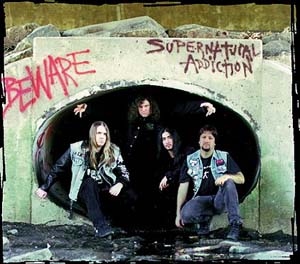
Will Deceased ever do a massive tour?
It’s unknown to me truly! Jobs and home security come first with us. Family, rent, etc.
Yeah all bands on some level deal with it. But we are us and we gotta look out for us first off! If we can ‘arrange’ it then ‘yes’ we will indeed be there! Time off from work aint easy to some of the guys. And I sincerely respect that and understand tenfold. I know if we can we willlllllllllllll!
Mr Fowley, I have heard you are recovering from lung troubles that mean you cannot assume your customary position behind the kit. Will this ever change?
It’s doubtful! We have a new drummer in Dave ‘Scarface’ Castillo and to tell you the truth, he’s just perfect for the band and we will carry on with him as brother, family, and friend! It’s the ‘end of an era’ and the beginning of another! Chapter 1 complete! Now onto chapter 2! Wish us luck! We rise from the grave come midnight!
since you gentlemen have survived this long, where most metalheads are in their teens, do you have any advice about “growing up” and “life and how to live it”?
Do your best to keep your head about you! Have your spirit in hand at all time, wear your heart on your sleeve, and keep your elders’ good ways within you. Never look back and never give in! I wish everyone well in their journey!
How would you have me killed for asking so many questions? Or, more apropos to the interview: is there anything else I forgot that should be answered?
Great interview! It came from the heart and so did my answers! Thnaks for caring long enough to type this and i wish you only the best! Check out the website…
(official) Up the Tombstones
And email me at kingsley22@starpower.net for any info, etc. you may need!
Long live the loud!
Thanks a million and one
King Fowley 3/20/03
No CommentsThe normal question, the first question is, are these cannibals? No, they are not. Cannibalism in the true sense of the word implies an interspecies activity. These creatures cannot be considered human. They prey on humans. They do not prey on each other, that’s the difference. They attack and they feed only on warm flesh. Intelligence? Seemingly no reasoning ability, but basic skills remain from a remembered everyday life. There have been reports of these creatures using tools. But even these are the most basic, the use of tools as bludgeons and so forth. I might point out that even animals have been known to adopt the use of tools in this manner. These creatures are nothing but pure, motorized instinct. We must not be lulled by the concept that they are our family members or our friends. They are not. They will not respond to such emotions. They must be destroyed on sight!
– Dr. Millard, Dawn of the Dead (1978)
Tags: deceased, interview, king fowley
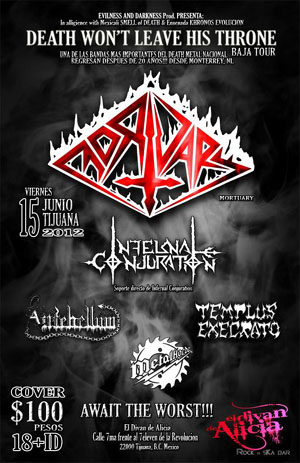 Mortuary/Infernal Conjuration “Baja Tour 2012”
Mortuary/Infernal Conjuration “Baja Tour 2012”
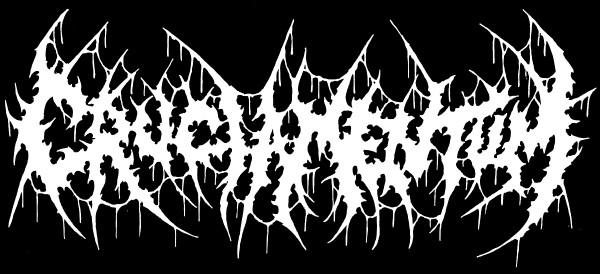
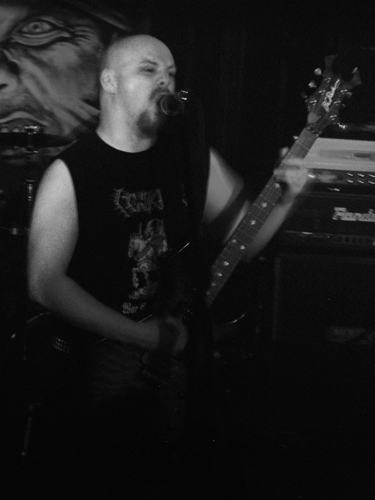 This is an interesting subject, but I don’t think that it is something that can be easily summed up in a couple of paragraphs. I do agree with you that there has been a strong moral decline in the last decade; people have become lazier, apathetic and more selfish. Many I have heard attribute this to the economic decline of the last few years, and although I don’t doubt that the inevitable depression caused in worse affected areas by poverty and unemployment is to blame, but I think that these problems are older than the economic problems. Bear in mind I am only 26, but I have noticed since my childhood a huge rise of an entitlement attitude in people in England. People seem to believe now that they are entitled to more, and many will grab at whatever they can lay their hands on, people have started to have children younger so that they can receive benefits and lead a more comfortable and lazy life. No doubt the obvious neglect on these “unwanted” children is having a serious effect on the younger generation’s behaviour as well. Perhaps with people’s needs being catered to more easily we have just simply eradicated the need for friendlier, close-knit communities? To be honest, I have no answers to these questions, just speculation of my own. I’d be more than happy to discuss this at further length in person with anyone interested though.
This is an interesting subject, but I don’t think that it is something that can be easily summed up in a couple of paragraphs. I do agree with you that there has been a strong moral decline in the last decade; people have become lazier, apathetic and more selfish. Many I have heard attribute this to the economic decline of the last few years, and although I don’t doubt that the inevitable depression caused in worse affected areas by poverty and unemployment is to blame, but I think that these problems are older than the economic problems. Bear in mind I am only 26, but I have noticed since my childhood a huge rise of an entitlement attitude in people in England. People seem to believe now that they are entitled to more, and many will grab at whatever they can lay their hands on, people have started to have children younger so that they can receive benefits and lead a more comfortable and lazy life. No doubt the obvious neglect on these “unwanted” children is having a serious effect on the younger generation’s behaviour as well. Perhaps with people’s needs being catered to more easily we have just simply eradicated the need for friendlier, close-knit communities? To be honest, I have no answers to these questions, just speculation of my own. I’d be more than happy to discuss this at further length in person with anyone interested though.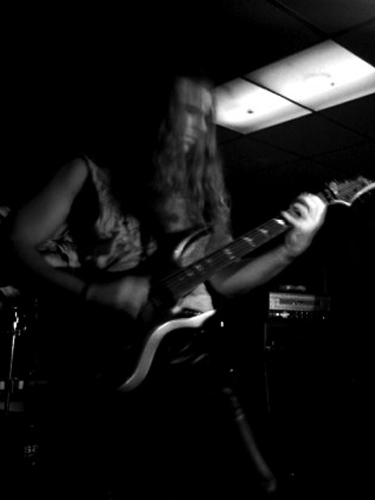 What releases have you produced so far, and where are you taking the band at this time? What’s next for Cruciamentum?
What releases have you produced so far, and where are you taking the band at this time? What’s next for Cruciamentum?
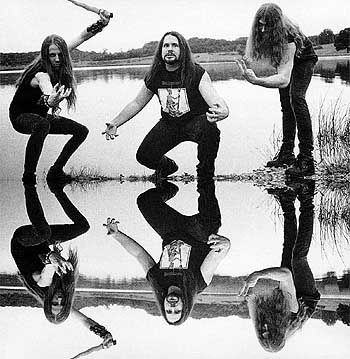
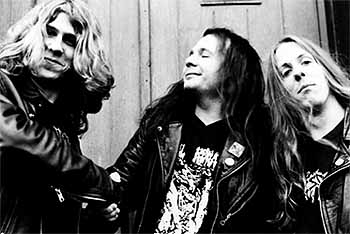 I agree with the statement and take it as a compliment! Again we just write what we like and want to hear. Every riff we write has to fucking kill, no filler songs or parts with CIANIDE as far as I’m concerned. Bands with catchy choruses is the style of metal that we grew up with so it only makes sense that we would emulate that. Even stuff like early Death, Terrorizer, Repulsion, Massacre and even Morbid Angel had choruses that you could consider “catchy”. I can appreciate bands that play overly technical, but most of the time I prefer something that sticks in my head and kicks my ass.
I agree with the statement and take it as a compliment! Again we just write what we like and want to hear. Every riff we write has to fucking kill, no filler songs or parts with CIANIDE as far as I’m concerned. Bands with catchy choruses is the style of metal that we grew up with so it only makes sense that we would emulate that. Even stuff like early Death, Terrorizer, Repulsion, Massacre and even Morbid Angel had choruses that you could consider “catchy”. I can appreciate bands that play overly technical, but most of the time I prefer something that sticks in my head and kicks my ass. Do you support or reject anti-bestiality laws?
Do you support or reject anti-bestiality laws?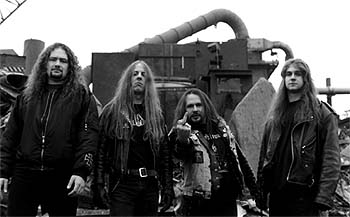 Are reactions to Cianide different in Europe and Asia versus the USA?
Are reactions to Cianide different in Europe and Asia versus the USA?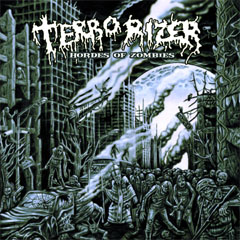 The first thing people say, almost like a spell to ward off mistaken appreciation, is that this band is not the same band who cranked out “Fear of Napalm” and “Corporation Pull-In.”
The first thing people say, almost like a spell to ward off mistaken appreciation, is that this band is not the same band who cranked out “Fear of Napalm” and “Corporation Pull-In.”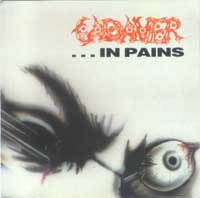 When did Cadaver form and what bands inspired the members at the time?
When did Cadaver form and what bands inspired the members at the time?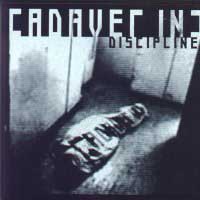 If you recorded another album in the worldview of the original Cadaver, what do you think it would be?
If you recorded another album in the worldview of the original Cadaver, what do you think it would be?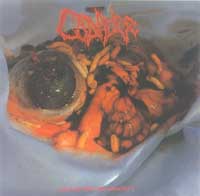 How do you write songs as a band? Have you taken advantage of virtual songwriting (sending MP3s, tapes, WAVs, CDRs, to each other)?
How do you write songs as a band? Have you taken advantage of virtual songwriting (sending MP3s, tapes, WAVs, CDRs, to each other)?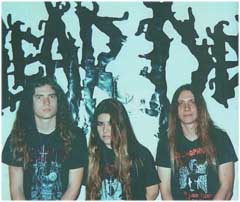 What art do you enjoy outside of metal?
What art do you enjoy outside of metal?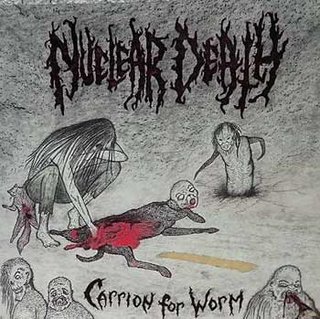 If you were suspended in a reality where another Nuclear Death album might be made, what in your mind might it sound like?
If you were suspended in a reality where another Nuclear Death album might be made, what in your mind might it sound like? Are you a large fan of any mainstream media?
Are you a large fan of any mainstream media?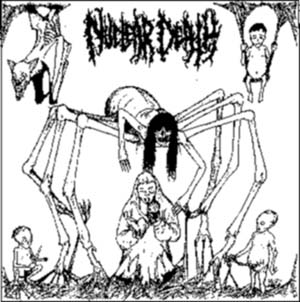 Is Saddam Hussein a CIA plant?
Is Saddam Hussein a CIA plant?

